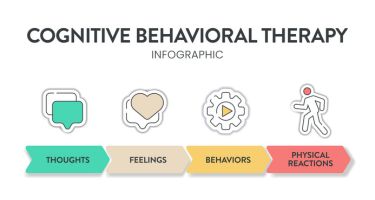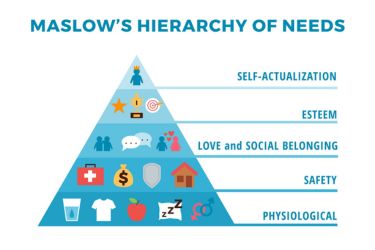Alcoholism affects millions of people and is a serious issue for both individuals and society. Alcohol misuse can lead to a range of health problems, impact mental wellbeing, and cause social and economic challenges for families and communities. Understanding what alcoholism is, its effects, and the options available for treatment helps us support each other and make informed choices.

Many of us know someone who drinks regularly or too much, but we might not realise how deeply alcohol can damage the body and mind. Regular heavy drinking raises the risk of disease, harms relationships, and can even be fatal. Seeking help early is important because there are effective ways to manage and recover from alcohol dependence.
Key Takeaways
- Alcoholism is a common and treatable health issue.
- It harms our physical, mental, and social wellbeing.
- Support and treatment options are available for recovery.
Understanding Alcoholism
Alcoholism is a broad term that covers different patterns of problem drinking. We need to look at what it is, how it is diagnosed, the various forms it takes, and factors that can lead to its development.
Definition and Diagnosis
Alcoholism, also known as alcohol use disorder (AUD), is a medical condition where a person struggles to control or stop their drinking, even though it causes harm. The diagnosis of AUD involves looking for certain signs, such as being unable to limit the amount consumed, spending a lot of time drinking, and feeling intense urges to drink.
Doctors use standard criteria for diagnosis, like those listed in the DSM-5. These include needing more alcohol to get the same effect (tolerance), experiencing withdrawal symptoms without alcohol, and continuing to drink even when it creates problems at work, school, or home.
We may also notice that people with alcohol dependence often neglect personal responsibilities and relationships. Health problems, emotional issues, and poor decisions often develop as abuse continues. Alcohol use disorder symptoms may appear gradually and worsen over time.
Types of Alcohol Use Disorders
There are several types of alcohol problems we should consider. Alcohol abuse is when someone drinks in ways that harm their health, relationships, or daily life. Alcohol dependence means a person has become physically or mentally reliant on alcohol and faces withdrawal symptoms without it.
Alcohol misuse is a broad label for unhealthy drinking patterns, whether regular or occasional. Clinicians often refer to the overall group of problems as alcohol use disorders. These can range from mild to severe, depending on how many symptoms are present.
Problem drinking does not look the same for everyone. Some people binge drink occasionally, while others develop steady use and dependency. Middle-stage and chronic dependency tend to include more severe symptoms, including withdrawal issues and changes in brain chemistry.
Risk Factors and Causes
Many factors can raise the risk of developing alcoholism. A family history of alcohol use disorder makes it more likely someone will struggle themselves. Genetics play a part, but environment and upbringing also matter.
Mental health conditions such as depression, anxiety, or trauma can increase the risk. Starting to drink at a young age, social pressure, and stress are also important. Societal factors, like how normal drinking is in a community, can shape attitudes and habits.
Easy access to alcohol and certain personality traits, such as impulsivity, can make misuse or dependency more likely. Alcohol misuse harms nearly every part of the body, and risk increases the longer or more heavily someone drinks.
Physical and Mental Health Effects

Alcohol affects both our bodies and our minds in many ways. Its influence goes far beyond feeling drunk, causing serious health problems and increasing risks for various diseases.
Impact on the Brain and Mental Health
Alcohol changes the way our brain works. It slows down messages between our brain and body, leading to poor coordination and slurred speech. With heavy and regular drinking, we may face depression, anxiety, or paranoia. Alcohol can make existing mental health conditions worse and may also trigger new mental health problems. Many people use alcohol in hopes of feeling better, but that often leads to a cycle where both mental health and drinking keep getting worse. Regular alcohol misuse raises the risk for lasting memory loss and even brain damage, such as Wernicke-Korsakoff syndrome, which is linked to confusion and gaps in memory. Find more on alcohol’s mental health impact at Alcohol Change UK.
Short-Term and Long-Term Physical Health Risks
Drinking alcohol can cause trouble right away, like slurred speech, poor balance, and risk-taking. In the longer term, it puts stress on our organs, especially the liver, and can lead to serious health conditions such as liver disease, cancer (mouth, throat, liver, and breast), and pancreatitis. It raises blood pressure and increases the chance of heart attack or stroke. People who drink heavily over time may show signs of memory loss and dementia. Alcohol can harm almost every part of the body, causing problems with bones, digestive system, and immune system too. These risks get worse as drinking continues over months or years.
Alcohol Withdrawal and Related Symptoms
Alcohol withdrawal happens when people who drink a lot suddenly stop or cut down. The body gets used to having alcohol and struggles without it. Common signs include anxiety, shaking, sweating, and nausea. More severe symptoms can include seizures, confusion, and seeing things that are not there. For some, withdrawal can be dangerous and may require medical help. People with severe dependence are at risk for a type of withdrawal called delirium tremens, which can be life-threatening. Regular and heavy drinkers should always seek support before trying to stop on their own. Withdrawal also affects mental health, making depression or anxiety worse.
Effects on Women and Pregnancy
Women’s bodies process alcohol differently than men’s. They are more likely to develop liver disease, heart problems, and some cancers at lower levels of alcohol use. Alcohol affects hormone levels, which can cause additional health issues. Drinking while pregnant is risky because alcohol passes from the mother to the unborn child. This can cause miscarriage, stillbirth, or lifelong brain and body problems for the baby, including foetal alcohol syndrome. FAS can lead to growth problems, learning disabilities, and behavioural issues. Women who are pregnant or planning to become pregnant are advised not to drink at all.
Societal and Economic Consequences

Alcoholism impacts not just individuals but also families, workplaces, and communities. It can disrupt relationships, reduce earnings, and create major health and safety issues that affect us all.
Impact on Families and Relationships
Alcohol problems lead to significant social and emotional problems within families. People living with someone struggling with alcoholism often face arguments, trust issues, and stress. For many, this creates an unstable home life and weakens important relationships.
Domestic abuse is more likely in homes where one or more members have alcohol problems. Children may suffer neglect or experience emotional harm, while partners may face controlling or violent behaviour. Broken families and divorces are more common.
Peer pressure can also influence drinking behaviours, especially among teenagers. Parents may worry about the safety and choices of their children. Families may lose personal possessions or savings on alcohol instead of on necessities or future plans. This ongoing stress can cause long-term harm to everyone involved.
Financial and Employment Issues
Alcoholism often leads to serious financial problems for both individuals and society. People with alcohol problems might have trouble keeping jobs or maintaining steady earnings. Unemployment rates are higher among those with chronic alcohol use.
At work, alcohol misuse can reduce our productivity and lead to absences, poor performance, and more accidents or mistakes. Many businesses lose money from missed workdays and extra health care costs. On a larger scale, countries lose billions each year from reduced work performance related to alcohol, as shown by these findings.
Homelessness is another effect, with a significant number of people becoming homeless due to job loss and relationship breakdowns linked to alcohol use. As reported, alcoholism contributes to 35% of homelessness cases in the US. The financial burden can also extend to government programmes, social services, and health care expenses.
Community and Public Health Effects
Alcoholism has far-reaching effects on our communities and public health. It increases the risk of accidents, injuries, and unsafe sex, which can lead to further physical and social problems. Drink-driving and alcohol-related accidents put everyone at risk, not just the drinker.
Hospitals and emergency services often see high numbers of alcohol-related cases, stretching resources. Communities may also face higher crime rates or public disturbances caused by alcohol misuse. In many areas, alcohol use can make poverty worse and reduce our overall quality of life.
Social problems linked to alcohol, like domestic violence or child neglect, require extra support from police, schools, and social workers. The strain on our society is not only economic but also deeply personal, affecting health, safety, and well-being for all of us.
Alcohol Consumption and Behavioural Patterns

Alcohol use varies greatly, but certain drinking patterns are linked to higher risks. These patterns affect both personal well-being and public health, depending on how and when we drink.
Drinking Habits and Patterns
Our drinking habits often develop over time and can be shaped by age, traditions, peer influence, and family background. Some people drink only at special events, while others consume alcohol daily.
We see that regular alcohol intake is more common in some groups. For example, older adults may drink more often, but young people may drink larger amounts when they do. Cultural attitudes also shape whether alcohol is part of daily life or only used on weekends. According to research, the overall amount of alcohol consumed per person in the UK has changed in recent years, with many young people now choosing to drink less often than before. See more about drinking trends in the UK.
Key points:
- Drinking frequency varies widely.
- Some habits are linked to social situations, others to stress or daily routines.
- Family, culture, and social norms all play a role.
Binge Drinking and Harmful Drinking
Binge drinking means consuming a large amount of alcohol in a short time, often with the goal of getting drunk. This behaviour can lead to immediate risks such as accidents, injuries, and alcohol poisoning. Repeated binge drinking may cause memory problems and damage organs like the liver and heart.
Harmful drinking refers to patterns that put us at a long-term risk, not just after a single event. This could mean drinking over the recommended weekly limits, or frequent episodes of binge drinking. The World Health Organization outlines that health risks from alcohol rise sharply with excessive binge or heavy continuous drinking.
Risks of Binge and Harmful Drinking:
- Road accidents and violence
- Brain, liver, and heart damage
- Higher risk of dependence
Alcohol Cravings and Tolerance
When we drink often, our bodies can start to tolerate alcohol, meaning we need more to feel drunk or relaxed. This higher tolerance can encourage us to increase our intake, making harmful patterns more likely to develop.
Alcohol cravings are strong urges to drink, even when we know it may not be safe or healthy. These cravings can make it tough to cut down or stop drinking altogether. Over time, repeated drinking can change the way our brain works, making these urges stronger and lowering our self-control. Both tolerance and cravings are key signs of an unhealthy relationship with alcoholic beverages and can lead to dependence.
Recognising these signs early is important for seeking help and reducing harm.
Treatment and Recovery Options
People struggling with alcoholism can recover with the right support, medical care, and community connections. Effective treatment focuses on both the physical and psychological aspects of addiction, offering targeted approaches to help individuals regain control and rebuild their lives.
Detoxification and Medical Treatments
Detoxification is usually the first step in treatment. This process helps remove alcohol from the body safely. Withdrawal symptoms can be uncomfortable or even dangerous, so medical supervision is important.
Doctors may prescribe medicines such as naltrexone, acamprosate, or disulfiram. These medicines work in different ways. Naltrexone reduces cravings, acamprosate helps keep the brain stable, and disulfiram causes unpleasant symptoms if alcohol is consumed.
Some people require inpatient care in specialised clinics or hospitals. Others may manage with outpatient support. Treatment plans should be tailored to each person’s needs and physical health for the best outcomes. We can find information about medical support and medication on NHS alcohol misuse treatment options.
Therapeutic Approaches and Counselling
Therapeutic interventions help people understand and change their drinking behaviours. Counselling is a key part of most treatment services and can include one-to-one or group therapy.
Cognitive behavioural therapy (CBT) is commonly used to help people identify triggers and develop coping skills. Motivation enhancement therapy encourages people to take positive steps by increasing their motivation and confidence.
Family therapy may also be helpful, since alcoholism often affects loved ones. Alternative therapies, such as mindfulness, meditation, or art, sometimes form part of a wider treatment plan. A recovery practitioner might help people set goals and support progress, as described by Alcohol Change UK.
Support Groups and Self-Help Programmes
Support groups play a vital role in recovery. Alcoholics Anonymous (AA) is one of the best-known 12-step groups, where members share their experiences and support each other. Women for Sobriety is another option focused on supporting women.
Self-help programmes offer structure and community to those who want to stay alcohol-free. Meetings can be in-person or online.
Group therapy led by trained professionals may help people express feelings and gain insights by talking with others. Being part of a supportive network can reduce feelings of isolation. We Are With You and other services connect people to local support groups and treatment programmes.
Relapse Prevention and Long-Term Recovery
Staying sober requires ongoing effort. Relapse prevention teaches practical ways to handle situations where there is a risk to recovery.
We can learn skills to manage stress, avoid triggers, and build a strong support system. Continued counselling or group participation is often recommended.
Many find it helpful to check in regularly with their treatment team or support group. Some take medicines long-term, if advised by their doctor. Planning for setbacks and having a clear strategy can help reduce the risk of returning to drinking.
Recovery is different for everyone, but a steady routine, healthy relationships, and meaningful activities all support long-term progress.
Frequently Asked Questions
Understanding alcoholism helps us recognise its broad impact. We need clear definitions, signs to look for, effective approaches to treatment, and insights into both personal and social consequences.
What constitutes an alcohol use disorder?
An alcohol use disorder happens when our drinking habits start to cause problems in daily life, relationships, or health. We may struggle to control how much we drink or feel a strong urge to drink even when facing negative outcomes. For more on definitions and criteria, visit this alcohol FAQ.
What symptoms suggest an addiction to alcohol?
We might notice symptoms such as craving alcohol, being unable to stop drinking, or needing to drink more to feel the same effects. Other signs include ignoring responsibilities, giving up activities we once enjoyed, or experiencing withdrawal symptoms when not drinking. You can find a full list of common symptoms in this guide on alcohol addiction.
How can alcohol dependency be effectively treated?
Effective treatment often includes both psychological and medical support. We could benefit from counselling, support groups, and sometimes medication to manage withdrawal and cravings. Professional help is important so we can address both the mental and physical aspects of alcohol dependency. Strategies for support are discussed in these alcohol addiction treatments.
What are the societal consequences of widespread alcoholism?
Widespread alcoholism can increase healthcare costs, workplace accidents, and crime rates. Our communities may see rises in family breakdown, reduced productivity, and greater pressure on social services. To see further facts about the societal impact, visit this report from the World Health Organization.
How does alcoholism affect an individual's physical and mental health?
Alcohol harms almost every part of our body. We might face liver disease, heart problems, and weakened bones. Mentally, drinking can raise our risk for anxiety and depression, and can change the way our brain works, sometimes leaving us feeling worse after use. Read more about short and long-term health risks at the NHS and Bupa.
Is alcoholism classified as a disease, and if so, what are the implications?
Yes, alcoholism is widely recognised as a disease. This means we need medical and psychological help, just as we would for other chronic illnesses. It removes stigma and helps us understand the importance of ongoing care and support for recovery.





















